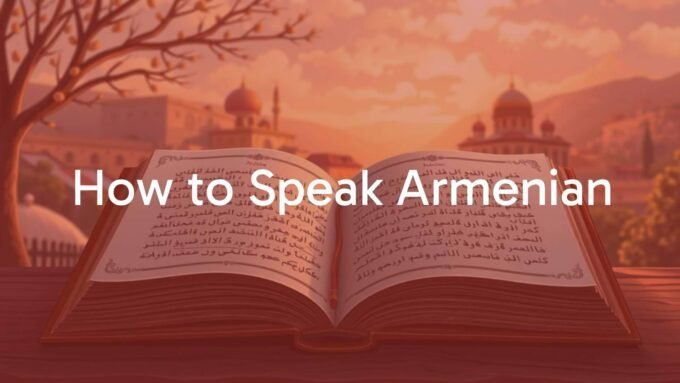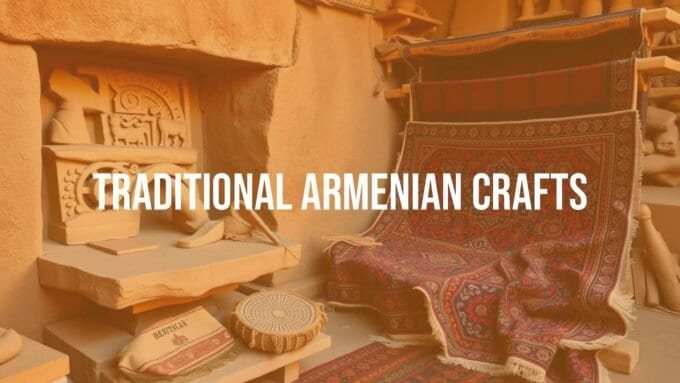The Armenian Church, officially called the Armenian Apostolic Church (Հայ Առաքելական Եկեղեցի), carries a special place in history, for Armenia and for Christianity in general. It is more than a church; it is a core part of Armenian national life, culture, and survival. Its story goes back to the Apostolic Age, making it one of the oldest Christian bodies. Armenia’s early choice to adopt Christianity as a state religion set the path for the nation’s future.
This Church has survived centuries of political turmoil, persecution, and exile, and it has long united Armenians and protected their heritage. Its distinct theology, rich worship, and cultural work fixed its place in Armenian life. From its apostolic beginnings to its worldwide presence today, the Armenian Church shows the endurance and unique character of the Armenian people.

Why Did Armenia Adopt Christianity as a State Religion?
Armenia adopted Christianity as the official state religion in 301 AD. Historian Nina Garsoïan called this “probably the most important step in its history.” It was both a spiritual change and a political choice that shaped the country. Christianity had already reached Armenia by the third century, so there were believers before 301.
Under King Tiridates III, guided by St. Gregory the Illuminator, the move set Armenia apart from its powerful neighbors, especially the Sassanid Persian Empire, which followed Zoroastrianism. Scholar Mary Boyce argues that accepting Christianity was also a sign of defiance toward the Sassanids. By joining the growing Christian community, Armenia formed a new identity, moved away from Iranian and Mazdean roots, and blocked further Parthian influence. This shift gave the nation a shared belief and a clear cultural mark that helped it survive long periods of foreign rule.
How Does the Armenian Church Shape Armenian Identity?
The Armenian Church is tightly linked with Armenian identity and is often seen as its main guardian. During many centuries without political independence, the Church kept national memory alive. Shared struggles and victories gave it a strong role as a sign of unity and strength.
A 2018 Pew Research Center survey found that 82% of people in Armenia say it is “very or somewhat important to be a Christian to be truly Armenian.” This shows how deeply faith and ethnicity are connected. The Church built space for culture, schooling, and social life, especially under foreign rule. Its role in creating the Armenian alphabet, literature, and art helped faith and national identity grow together. The Armenian Church is a place of worship and a living expression of the Armenian spirit, reminding people of their history and faith.
Origins of Armenian Christianity
Armenian Christianity reaches back to the earliest days of the faith, placing it among the oldest Christian traditions. Its story includes apostolic legends and accounts of dramatic conversions, laying a foundation for a faith woven into national life.
Who Were the Early Founders of the Armenian Church?
Tradition says two apostles of Jesus founded the Armenian Church: Thaddeus (Jude) and Bartholomew. In the 1st century, they went on missions to Armenia. Thaddeus reportedly healed King Abgar V of Edessa of leprosy in AD 30, leading to Abgar’s conversion, and then preached across Armenia. He is said to have converted King Sanatruk’s daughter; both were later martyred after Sanatruk turned away from the faith.
Bartholomew came after Thaddeus, bringing a portrait of the Virgin Mary and placing it in a nunnery he founded on the site of a former temple of Anahit. He converted a royal relative, the sister of King Sanatruk, and was martyred. Both apostles are said to have ordained local bishops before their deaths, creating an early church structure. While scholars like Bart Ehrman doubt the story of Abgar’s conversion, records show that Christian groups and clergy existed in Armenia before the 4th century, which fits with these traditions.
How Did St. Gregory the Illuminator Influence Armenian Faith?
St. Gregory the Illuminator led the official Christianization of Armenia. Born an Armenian Parthian, he was raised as a Christian in Caesarea in Cappadocia. King Tiridates III first punished Gregory, jailing him for almost fifteen years in Khor Virab (“deep dungeon”) in Artashat.
Legend says that after the king ordered the killing of Christian nuns, including St. Hripsime and St. Gayane, he fell ill and was turned into a wild boar. His sister, St. Khosrovidoukht, dreamed that only Gregory, thought dead, could heal him. Gregory was freed, healed the king, and converted the royal family. He was later made a bishop by Leontius, Archbishop of Caesarea, in 302 AD. Gregory returned to Armenia, baptized the royal household, and became the first Catholicos of Armenia. He then worked to convert the people and build the Church. His vision in Vagharshapat-Christ descending and striking the ground with a golden hammer-led to the building of the Mother See of Holy Etchmiadzin (“the place of the descent of the Only-Begotten”), the spiritual center of the Armenian Church.

What Role Did King Tiridates III Play in Conversion?
King Tiridates III was central to Armenia’s conversion, making it the first nation to adopt Christianity as the state faith. Once a persecutor of Christians, he became a strong supporter after his change of heart through St. Gregory. This royal support helped spread Christianity quickly and gave it firm ground in the country.
Tiridates named Gregory the first Catholicos and backed the removal of pagan shrines, the building of churches and monasteries, and the ordination of clergy. With leadership from the top, Christianity became rooted in Armenian society and culture. His choice was both spiritual and strategic, setting Armenia apart from nearby empires and shaping its identity for ages.
Growth and Development through the Centuries
The Armenian Church grew and adapted through the centuries, even under heavy pressure from outside forces. Its spread, distinct beliefs, and political trials mirror the wider history of the Armenian people.
How Did the Armenian Church Expand Its Influence?
After becoming the state religion, the Church expanded quickly across Armenia and beyond. With royal backing, Christianity touched every part of Armenian life within a few centuries. St. Gregory’s son, Aristakes, followed him as Catholicos and represented the Armenian Church at the First Council of Nicaea in 325 AD, which affirmed the doctrine of the Trinity, still confessed in the Nicene Creed.
Under Catholicos Nerses the Great (353-373), many monasteries and charitable centers were founded, strengthening church life and social care. Armenian missionaries also played a key role among Georgians and Albanians, helping form their national churches. In 405 AD, St. Mesrob Mashtots created the Armenian alphabet. The Bible and many theological works were then translated, starting a “Golden Age” of literature and rooting the faith in the Armenian language.

What Was the Council of Chalcedon and Why Was It Rejected?
The Council of Chalcedon (451 AD) defined Christ as having two natures-divine and human-joined in one person (dyophysitism). The Armenian Church, with other Oriental Orthodox churches, rejected this at the Council of Dvin in 507 AD (and again in 554 AD). Armenians held to the teaching of St. Cyril of Alexandria: “one incarnate nature of the Word” (miaphysis), which stresses Christ’s unity.
They saw the Chalcedonian statement as risking a split between Christ’s divinity and humanity. While some called them “monophysite,” the Armenian Church rejects that label and the teaching of Eutyches, which Chalcedon condemned. The accurate term is “miaphysite,” meaning divinity and humanity are both fully present in one united nature. Today, many ecumenical talks show that old disputes were often about words more than belief.
How Did the Church Respond to Persian and Byzantine Pressures?
The Armenian Church faced strong pressure from the Sassanid Persians and the Byzantine Empire. In the mid-5th century, the Persian Shah tried to force Zoroastrianism on the Armenians, pushed by priestly leaders. The Armenians resisted at the Battle of Avarayr in 451, led by St. Vartan Mamigonian. Though defeated in battle, they kept resisting under Vahan Mamigonian. In 484, the Treaty of Nuvarsag recognized their right to keep Christianity. This struggle tied the faith even more closely to Armenian identity.
Byzantium, while Christian, often pressed the Armenians to accept Chalcedon. The Armenian refusal kept their church distinct and sometimes led to conflict with Constantinople. These pressures often made the Church stronger as the protector of Armenian faith and nationhood.
What Were the Impacts of the Formation of Armenian Cilicia?
The Armenian Kingdom of Cilicia (1199-1375) greatly affected the Church, especially the location of the Catholicosate. After invasions and worsening conditions in Armenia Major (11th-12th centuries), many Armenians moved to Cilicia. The Holy See shifted several times after leaving Etchmiadzin, settling in Thavblour (1062), then Hromkla (1149), and finally Sis (1293), the Cilician capital.
With the Catholicosate in Cilicia, the Church met and spoke more with other churches, especially Rome. St. Nerses IV Klayetsi (Shnorhali), a key figure in dialogue, worked for church unity. The fall of Cilicia to the Mamelukes in 1375 brought new problems. Many wanted the See to return to Etchmiadzin when Armenia Major saw some peace. In 1441, a new Catholicos was elected in Etchmiadzin, leading to two Catholicosates, each with its own area, usually working together.
Doctrine and Religious Practices
The theology of the Armenian Church is ancient and distinct. Its view of Christ (Christology) shapes its teaching and worship.
What Is Miaphysitism and How Does It Define the Armenian Church?
Miaphysitism is the main teaching of the Armenian Church about Christ. It says that in Jesus, divinity and humanity are fully present and united in one, without confusion, division, or change. This differs from the Chalcedonian “two natures” view and from Eutychian monophysitism, which the Armenians reject as heresy.
Following St. Cyril of Alexandria, Armenians speak of “one incarnate nature” (mia physis). The word “mia” allows for a united, full divinity and full humanity. This teaching, tied to the rejection of Chalcedon, places the Armenian Church in the Oriental Orthodox family and shapes its worship, hymns, and spiritual life.
Church Leadership and Structure
The leadership and structure of the Armenian Church grew over many centuries, fitting both spiritual needs and changing political realities. Its system balances spiritual authority with local administration across the globe.
What Are the Two Catholicosates and Their Functions?
The Armenian Church has two Catholicosates: the Mother See of Holy Etchmiadzin and the Catholicosate of the Great House of Cilicia. This came about because the seat had to move during invasions and the fall of Armenian states.
The Catholicosate of All Armenians, based at Holy Etchmiadzin in Armenia, is widely seen as the spiritual head of the Armenian Apostolic Church. The Catholicos of All Armenians holds the title “Supreme Patriarch and Catholicos of All Armenians” (currently Karekin II). From its historic center, it guides church life in Armenia and much of the diaspora and plays an important part in national culture and faith.
The Catholicosate of the Great House of Cilicia, based in Antelias, Lebanon (since 1930), also has major authority. It kept its own line after 1441, when a Catholicos was chosen in Etchmiadzin while the sitting Catholicos stayed in Cilicia. While linked in faith with Etchmiadzin, Cilicia runs its own dioceses in the Middle East, parts of Europe, and North America. Both Catholicosates hold the same rights in their areas and usually work well together.
| Catholicosate | Headquarters | Main Areas Served |
|---|---|---|
| Mother See of Holy Etchmiadzin | Etchmiadzin, Armenia | Armenia and many diaspora dioceses |
| Great House of Cilicia | Antelias, Lebanon | Middle East, parts of Europe and North America |

How Do the Armenian Patriarchates Operate?
Alongside the two Catholicosates, the Church has two Patriarchates with high authority: the Armenian Patriarchate of Jerusalem and the Armenian Patriarchate of Constantinople and All of Turkey. Both answer spiritually to the Catholicos of All Armenians while managing their regions.
The Armenian Patriarchate of Jerusalem, founded in 1281 and seated in the Armenian Quarter, is led by the Patriarch of Jerusalem, Archbishop Nourhan Manougian. Its main role is guarding Christian Holy Places with the Greek Orthodox Patriarchate and the Catholic Franciscan Order. It also runs a seminary that trains clergy for service worldwide. Armenians have been in the Holy Land since the earliest Christian times, giving this Patriarchate deep roots.
The Armenian Patriarchate of Constantinople and All of Turkey, founded in 1461 and seated in Istanbul, leads the Armenian community in Turkey. Ottoman Sultan Mehmed II created it to oversee Armenian affairs. While linked to Etchmiadzin, the Patriarch of Constantinople (now Archbishop Sahak II Mashalian) was once the most powerful Armenian prelate under the Ottoman Empire. Both Patriarchates play important roles for their communities, especially in places with long Armenian histories.
What Is the Importance of Eparchies in Armenia and the Diaspora?
Eparchies (dioceses) are the main local and regional units of the Armenian Church in Armenia and across the diaspora. They serve the faithful, guide community life, and help keep Armenian culture and identity alive.
In Armenia and Artsakh, many eparchies belong to Holy Etchmiadzin, covering regions like Aragatsotn, Armavir, Ararat, Gegharkunik, and Syunik. These dioceses are important for the spiritual life of the people and support national church work. The Army Chaplaincy Program, for example, has more than 50 clergy serving the Armed Forces of Armenia with talks and prayers, showing the Church’s role in national life.
In the diaspora, eparchies are just as important. They serve communities in Russia, Europe (France, UK, Germany, Greece), the Middle East (such as Egypt), and the Americas (USA, Canada, Argentina). These dioceses offer worship, cultural centers, and schools, helping Armenians keep their heritage in new countries. Whether under Etchmiadzin or Cilicia, these eparchies link Armenians everywhere to their ancestral Church.
Territorial Jurisdiction and Global Presence
The worldwide spread of the Armenian Church shows its long history and the reach of the Armenian diaspora. Its structure serves both the homeland and Armenian communities on many continents.
How Is the Church Organized in Armenia and Artsakh?
In Armenia and Artsakh, the Church is deeply tied to national life. Article 8.1 of Armenia’s Constitution recognizes its “exclusive historical mission… in the spiritual life, development of the national culture and preservation of the national identity of the people of Armenia.” The Mother See of Holy Etchmiadzin leads the structure here, under the Catholicos of All Armenians.
The land is divided into eparchies such as Aragatsotn, Armavir, Ararat Patriarchal, Gegharkunik, and Artsakh. These dioceses oversee churches, education, and services. The Saint Gregory the Illuminator Cathedral in Yerevan is the largest Armenian Apostolic church in the world, showing the faith’s place in the homeland. The Church also supports the armed forces through chaplaincy. In Artsakh, despite recent crises, the Church has long been central. In 2009, the government made the Armenian Apostolic Church the only one allowed to preach without special approval, while giving a path for others to apply. This shows how closely church and national identity are linked in these lands.
What Role Does the Armenian Church Play in the Diaspora?
The Armenian Church plays a very important role in the diaspora. It acts as a main center for community life, culture, and faith for Armenians living abroad. After waves of persecution, especially the Armenian Genocide, Armenians spread across the world, taking their church with them.
Across Europe, the Americas, the Middle East, and elsewhere, dioceses serve these communities. In 2024, the Church reported 600,000 members in North America, 10,000 in South America, and 25,000 in Europe. Churches like St. Sarkis in Kensington, London, and many parishes in the United States and Canada are places of worship and important cultural hubs. They run Sunday schools, Armenian language classes, and cultural programs to help pass on traditions, history, and language. The Armenian Patriarchate of Constantinople and the Armenian Apostolic Church of Iran are large Christian minority communities in mostly Muslim countries. In Ethiopia, Armenian churches formed after groups were welcomed there following the genocide. The Church gives diaspora Armenians a strong sense of belonging and a common voice while keeping ties to their heritage.
| Region | Reported Members (2024) |
|---|---|
| North America | 600,000 |
| South America | 10,000 |
| Europe | 25,000 |
Armenian Church through Political Upheavals
The Armenian Church’s past is marked by strong faith and harsh political storms. Its survival under foreign rule, repression, and genocide shows its deep bond with the Armenian people.
What Impact Did Russian and Ottoman Persecutions Have?
Both the Russian and Ottoman Empires harmed the Armenian Church and cut its freedom. In the Russian Empire, by 1903 the Tsarist state moved to seize church property. This was part of a wider policy to control religion. After protests, much was returned by 1905.
The Ottoman Empire’s actions were far worse. During World War I, the Armenian Church suffered during the Armenian Genocide that began in 1915. Clergy and laypeople were targeted and killed. The church in much of historic Turkey was nearly wiped out, leaving small communities in places like Constantinople. The genocide reshaped the Church’s life and led to a vast diaspora, where the Church became a key institution for identity and survival.
These attacks, while terrible, often brought the Church and people closer, fixing its role as a national symbol and a sign of resistance.
How Did the Armenian Genocide Affect the Church?
The Armenian Genocide, launched by the Young Turks in 1915, had a catastrophic effect on the Church. About 1.5 million Armenians were killed (estimates range from 700,000 to 1,800,000). Clergy were targeted, and churches, monasteries, and sacred art were destroyed.
The result was the near removal of Armenians from their historic lands in the Ottoman Empire, and the Church lost much of its base in Western Armenia. After this, Armenians spread around the world, and the Church became the main keeper of identity, language, and culture in exile. On April 23, 2015, the Armenian Apostolic Church canonized all victims of the genocide-the largest canonization service in history-honoring their martyrdom and the people’s endurance.

How Did Soviet Rule Reshape Church Life?
Under Soviet rule, with official atheism and state control, church life changed deeply. In the NKAO (Nagorno-Karabakh Autonomous Oblast), all active religious sites were shut, and clergy faced exile or execution. Faith practice was tightly restricted, and the Church was pushed underground or into a limited public role.
Even so, the Armenian Church survived. Some activities-weddings, baptisms, and the Sunday Patarag (Divine Liturgy)-resumed later under strict oversight. The Catholicosate of Etchmiadzin continued with reduced freedom. Catholicos Vazgen I (1955-1994) managed pastoral visits and worked on restoring Etchmiadzin Cathedral and other churches within Soviet limits. His work prepared the way for the Church’s renewal after the USSR fell and Armenia regained independence in the 1990s. This period of suppression strengthened the Church’s bond with the people, who held to their faith despite pressure.
Cultural Contributions and Key Figures
The Armenian Church shaped Armenian culture through support for the arts, books, and learning. Many of its leaders left a lasting mark on the nation’s heritage.
Who Was St. Mesrob Mashtots and What Is the Legacy of the Holy Translators?
St. Mesrob Mashtots (d. 438) is one of the most honored figures in Armenian history. In 405 AD, with help from King Vramshabouh and Catholicos Sahak I, he created the Armenian alphabet. Before this, Armenians used Greek or Syriac for religious texts.
This invention sparked a “Cultural Revolution” and began the 5th-century “Golden Age” of Armenian literature. St. Mesrob, Catholicos Sahak I, and their students-the “Holy Translators”-began the huge task of translating the Bible from the Greek Septuagint. The Armenian Bible is praised for clear language and careful translation, shaping later literature and common speech. They also translated many works of the Church Fathers (like Irenaeus, St. Gregory of Nazianzus, St. Gregory of Nyssa, and St. John Chrysostom). Some Greek and Syriac texts survive only in Armenian, showing the value of their work. They translated classical and philosophical writings too. This learning strengthened Christianity and gave Armenians a strong national culture during political upheaval, confirming the Church’s role as keeper of their heritage.
Controversies and Modern Challenges
As an ancient body, the Armenian Church has faced disputes and continues to deal with hard modern issues, inside and outside the Church.
What Were Major Theological Controversies in the Medieval Era?
In the medieval period, the Church faced challenges from Latin missionaries in the 14th century who tried to unite it with Rome. Many Armenian clergy and writers defended their doctrines and rites. St. Gregory of Tatev (1346-1410) was a leading voice, writing to protect Armenian teaching against Latin influence.
There were also internal power struggles between the Catholicos and kings. In 1037, King Hovhannes-Smbat of Ani deposed and jailed Catholicos Petros for suspected pro-Byzantine leanings and put in another man. Clergy protested, and the king restored Petros. A major council at Ani in 1038 denied the king the right to appoint or remove a Catholicos, guarding the Church’s independence. Groups like the Paulicians (7th-9th centuries) and Tondrakians (9th-11th centuries) also opposed the Church’s authority and teachings.
How Does the Armenian Church Address Contemporary Issues?
Today the Church works to re-evangelize Armenia after decades of Soviet atheism and to meet the many needs of a global diaspora. Its mission is to bring the Gospel into all parts of Armenian life, echoing St. Gregory the Illuminator’s work.
There are also criticisms and disputes. Scholars such as Samvel Karapetyan have questioned parts of the Church’s past, including claims of loyalty to foreign rulers. In modern Armenia, some criticize the Church’s closeness to the state. Former Prime Minister Hrant Bagratyan called it an “untouchable” body that is secretive about finances. Accusations have touched senior leaders, including Archbishop Navasard Ktchoyan in a money-laundering case and criticism over luxury lifestyles. The Church also faced protests over social issues, such as opposing the Istanbul Convention in 2019 due to its recognition of rights for transgender people. Comments like Father Asoghik Karapetyan’s claim that a non-Apostolic Armenian is not a “true Armenian” also sparked debate about faith and national identity. Even with these issues, the Church keeps an important role in Armenian spiritual and cultural life, working to renew religious practice in the diaspora and serving through its two Catholicosates and Patriarchates worldwide.
Frequently Asked Questions on Armenian Church History
The Armenian Church’s history is rich and varied. Here are some common questions and brief answers.
What Are the Main Branches of the Armenian Church?
“Armenian Church” usually means the Armenian Apostolic Church, the national church of Armenia and an independent Oriental Orthodox body. It is the main branch in most historical discussions.
But there are also other Armenian Christian groups:
- Armenian Apostolic Church: Also called the Armenian Orthodox or Armenian Gregorian Church. It is autocephalous (self-headed), led by the Catholicos of All Armenians. It follows Miaphysitism and did not accept the Council of Chalcedon. It includes two Catholicosates (Etchmiadzin and Cilicia) and two Patriarchates (Jerusalem and Constantinople).
- Armenian Catholic Church: A separate Eastern Catholic Church in full communion with Rome, recognizing the Pope. It keeps many Armenian rites and customs but follows Rome in theology and leadership. The Patriarch’s see is in the monastery of Bzommar, Lebanon.
- Armenian Evangelical Church: Protestant Armenian communities that began through 19th-century missions. They are distinct from both the Apostolic and Catholic Armenian churches and follow various Protestant teachings.
When people speak of “the Armenian Church” in a national or historical sense, they almost always mean the Armenian Apostolic Church, which has shaped Armenian identity and culture for more than 1700 years.















Leave a comment